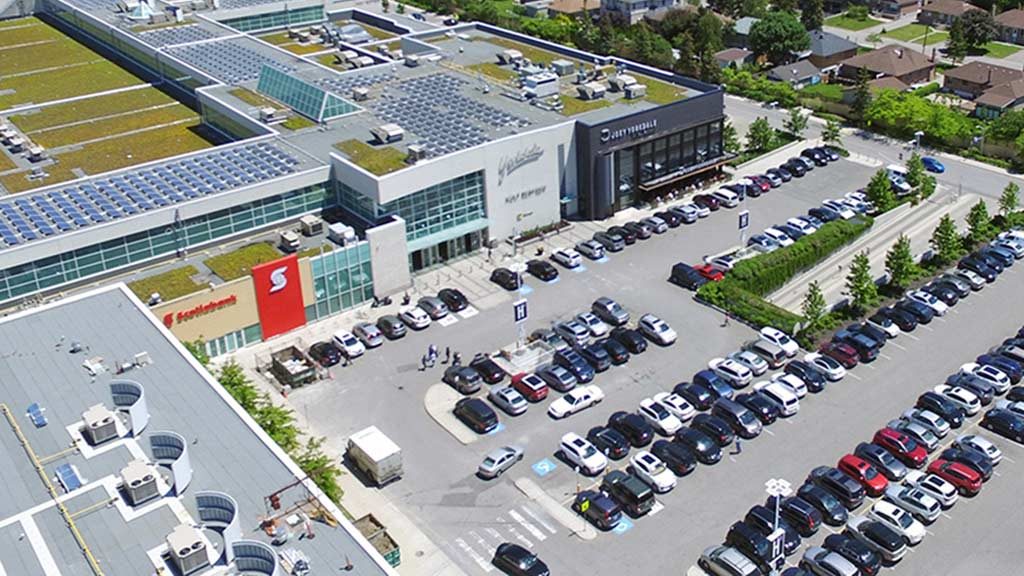Inputs for assessing the financial viability of rooftop PV solar arrays have been shifting over the past several years.
On one hand, government grants for system installations and power buy-back programs have all but disappeared across Canada.
In contrast, advances in technology have improved both solar cell efficiency and system reliability while also lowering capital costs. All the while, social and political pressure to lower dependency on fossil fuels has increased rapidly.
It’s bringing attention to the power generation potential of mid-size solar installations on commercial and institutional buildings.
In fact, a report titled Solar Energy Public Buildings in Alberta, published in May 2016, notes that a study conducted by Natural Resources Canada, “discovered that for commercial and institutional buildings, the total PV electricity generation potential is about 15-17 per cent of electricity use.”
This potential has been recognized by property developer Oxford Properties.
Oxford is a real estate investment, development and management company that manages both for itself and its co-owners and investment partners, approximately $60 billion of real estate assets.
In 2017, the company took advantage of recent major renovations to their Yorkdale Shopping Centre in Toronto to install a 200kWh solar system, comprised of 600 panels, on a 20,000 square foot portion of their 35 acres of flat roof.
Oxford is so enthused with its two-year experience that it reportedly plans to install one million square feet of PV arrays on rooftops across its retail and industrial portfolio over the next three years.
Oxford has demonstrated that installations like this can be financially beneficial, even without government grants and subsidies, while generating significant amounts of its own power requirements.
In fact, the Yorkdale project exceeded Oxford’s own projections by 10 per cent.
The inputs for assessing the viability of PV arrays on commercial and public buildings go beyond the cost of the installation itself, of course.
Depending on the project and its owner, this can lead to a disparity concerning projected long-term benefits.
A case in point is the City of Orillia, included in the structural design of that city’s new $55-million multi-sport recreation centre was accommodation for future PV arrays on a 14,000 square foot section of roof over the gymnasium.
However, the city has postponed its decision to go ahead with a proposed 150kWh solar installation, despite promises of capital assistance from a local interest group.
What has put Orillia’s project on hold surrounds estimations of annual O&M costs. Electricity in Orillia is managed by the Orillia Power Corporation (OPC), a holding company wholly owned by the city itself.
Asked by city council to give a project viability assessment, the OPC’s Manager of Generation Projects, Troy Mannell, estimated that, based on the corporation’s experience, operating solar installations at three other city-owned facilities, annual O&M would total $18,000. This would effectively negate the value of any power generated.
Mannell explained that although this was a “high level estimate” based on several factors that went beyond OPC’s program of bi-annual maintenance, inspections, monitoring and communications.
“We usually see major warranty replacements once a year — labour is not always included under the warranty,” he said. Mannell went on to explain that the main culprits were faulty inverters, although failures usually occur within the first few years after installation.
Interestingly, the OPC’s estimates for annual O&M costs contrast sharply with those experienced by Oxford Properties at its Yorkdale property.
“We pay a third party to monitor and maintain the system in good working order,” Darryl Neate, Oxford’s Director of Sustainability wrote in an email. “Currently, we are seeing O&M market rates in the range of $10.50 to $14.00/kW DC.”
This translates into annual O&M costs between $2,100 and $2,800.











Recent Comments
comments for this post are closed